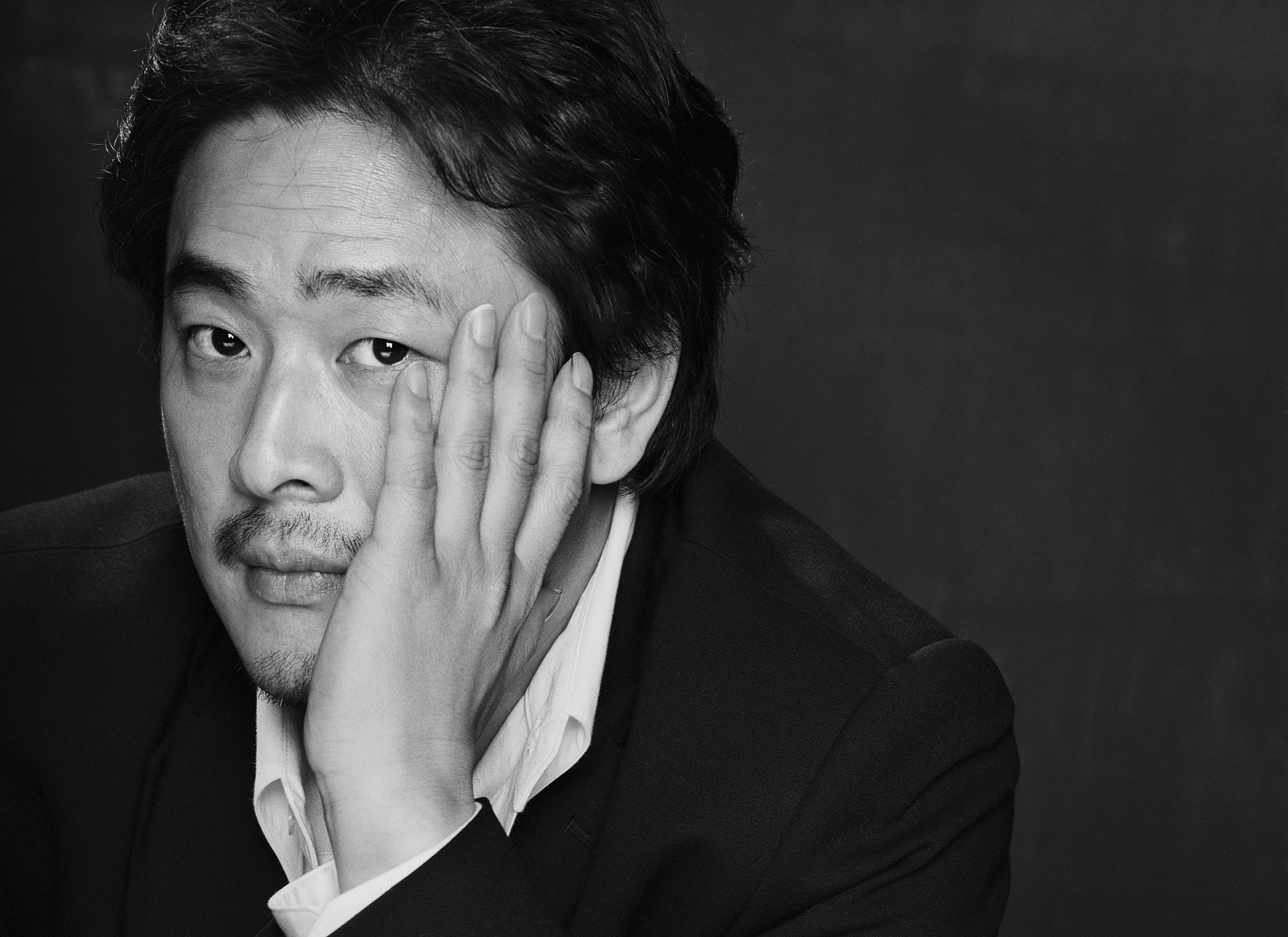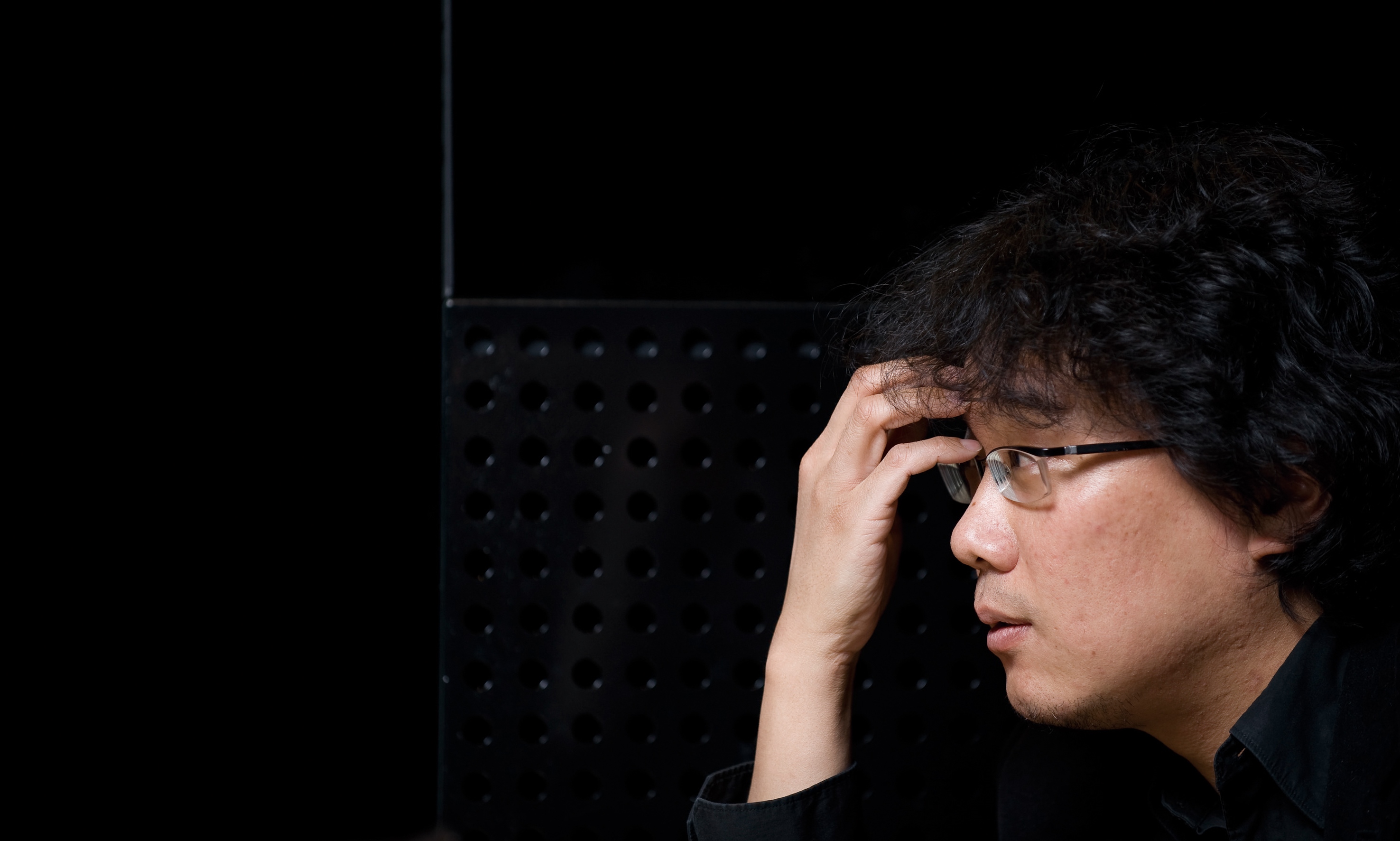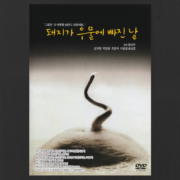Park Chan Wook: A Career in Revenge
When Park Chan Wook was a young boy, his local priest told him he would make a good clergyman. Park thought it was because of his manner, or maybe the priest thought he didn’t like girls. Whatever the reason the priest had, this idea represents an interesting lens in which to look at the career of Park Chan Wook. Korean films have become known worldwide for being brutally violent and disturbing, and this is mostly down to the cinema of Park. Not the type of films you’d expect from a possible clergyman, but don’t think religion plays no part here; his films are infused with forbidden desires, retribution and family.
A student of philosophy at Sogang University in Seoul, Park got his start in the movie business by running a film society at his university and writing film criticism. He decided to pursue filmmaking only after seeing Alfred Hitchcock’s Vertigo; the influence of that director’s career is evident on Park’s. And after getting some spots on films as an assistant director, Park had to continue being a critic to pay the bills. This helped him build a library of film knowledge that would help his later career. His first two films as director were so tiny that they made little splash commercially or critically. It wasn’t until Joint Security Area (J.S.A), which I covered last week, where he was first recognized for his work.
J.S.A was the catalyst for starting the new wave and turning it into what we know it as today. It opened up new opportunities for all Korean filmmakers in terms of getting more interesting independent films made. It also opened up more contentious issues within Korean society in mainstream cinema. When we look at J.S.A in the context of Park’s filmography, it sticks out however. Its narrative is relatively straightforward by his standards and doesn’t grapple with surreality. This should not downplay its status as a great film and one that is incredibly important to Korean cinema. Its success also allowed Park to create the types of films he really wanted to.
This is when in 2002 Park started the group of films he was most known for, the Vengeance trilogy. The first installment Sympathy for Mr. Vengeance is about a deaf mute man (Shin Ha Kyun) who decides to kidnap the daughter of the boss who laid him off (Song Kang Ho) in order to get ransom money to help his sick sister. It has an interesting narrative structure which changes focus as the characters change themselves. We start with Shin Ha Kyun’s story and it gradually moves onto Song Kang Ho’s. With Mr. Vengeance and the Vengeance trilogy as a whole, Park Chan Wook shows a dark, unflinching side of humanity. Each film and each character has a different type of revenge they want to commit, and each of them is dealt with in the same way by the end of their story: they all lose their humanity.
How Park portrays this in his characters is interesting too. Our sympathy or lack thereof seems to be in constant flux with the characters. Revenge is quite an evocative emotion so we feel for those wronged and hope they achieve their goal. Yet, as the film moves forward, their actions become more tainted as they try to cover up the mess they made. Park feels for these characters despite the mistakes they make. He sees them as human and wants to see their dark side laid out. He is searching for human nature through the medium of revenge. Why revenge though?
Also on KultScene: Gaeko & Yankie ‘Cheers’ Song Review’
Historically, revenge stories become popular or current in times of unrest. The context of the Asian financial crisis in 1997 is important to the prominence of revenge in Park’s films. Revenge stories are seen as ways of getting back at those who caused the damage. When the people lose trust in the government, police etc they fantasize about revenge and in this time in Korea, the people were not happy. This raises the question of morality though and shows why our relationships with the characters are always changing. For Park morality is the most important subject. He says:
Revenge is an instrument for raising questions about morality. The idea is that the hero and the audience are involved in a moral dilemma in which every choice is bad. – Haaretz
The brutality Park is known for also shows up in Mr. Vengeance. Each tragedy that befalls a character is extremely violent and seems to get more vicious each time. There are torture scenes, stabbings, drownings and Tarantino-esque blood spraying. The problem here is whether or not this violence is a visual representation of morality or indulgent showing off. Of all Park’s films Mr. Vengeance walks the closest line between these two. Each act of violence is beautifully shot in a way that suggests great thought was put into them and that it’s more than just cool violence. This technique can also make the violence seem like it was included for its own sake. Park explains that he shoots theses scenes in a beautiful way because no one would want to watch such repulsive acts if shown in an ugly way. When shown in a beautiful way we have to deal with the irony of the situation which makes us think about our own attitudes to violence in media.
Violence plays a huge part in Park’s cinema and is what garnered him most of his attention along with his next film from 2003, Oldboy. Not since Alexandre Dumas’ The Count of Monte Cristo was a revenge story so well crafted. Awarded the Grand Prix at the 2004 Cannes Film Festival and championed by Quentin Tarantino, Oldboy became the first Korean film to gain any success in the United States. It follows Oh Dae Soo (Choi Min Sik) on his path to revenge after being inexplicably kidnapped by an unknown party for no reason. He is released fifteen years later and immediately begins the search for his captor.
Oh’s search takes many twists along the way but remains clear and relevant throughout. This is what makes a film with a large twist, Oldboy has one of the most famous of them all, really work. If the story moves in consistent ways and yet can still shock us, even on rewatches, then you know the twist works. I don’t want to spoil it for anyone but the twist is foreshadowed very slightly in a few scenes that you won’t notice until you watch it for a second time. This attention to detail elevates Oldboy above other films with twists that seem to take place just for the sake of it.
Over the course of these changes in the story, the humanity of the main character Oh Dae Soo is laid bare before us. He is man full of rage, hell bent on finding and destroying his captors. However once out he realises that his ordeal might not be over. What follows is a series of events chronicling the physical and mental downfall of Oh. By the end of the film we see a completely broken man, devoid of humanity and willing to go to any lengths to achieve his goal.
Each part of this film plays a part in making a statement about the destruction of humanity. The extreme violence, which apart from the twist is what the film is best known for, is not exploitative or overly stylized. It shows a man punishing and being punished within a context of revenge. Oh eats a live octopus because he wants to feel its life force after being captive so long. He slowly tortures one of his captors by pulling out his teeth because he wants him to suffer like he made Oh suffer. The violence even comments on the audience’s humanity in the scene where a line is seen from Oh’s hammer to the head of one of his captors right before Oh hits him but the hit isn’t shown. Park makes the audience anticipate seeing this act of violence but pulls out right at the last moment making us realise we just wanted to see a man’s head get smashed in by a hammer.
I could write a whole essay just on Oldboy (I might just do that sometime) from the surrealistic aspects to the immaculate production design to the Freudian relationships but for now we’re going to move on. After Oldboy the Vengeance trilogy came to an end with Sympathy for Lady Vengeance in 2005. Lady Vengeance is about Lee Geum Ja who was wrongly imprisoned for kidnapping and murdering a child. The story starts as she is released and starts her path of revenge on the real killer. The film takes its time telling her back story as we learn she is a kind hearted woman who got caught up with someone bad and suffered greatly for it. Once she got out of prison though she would no longer be so kind hearted as she comes after the man who condemned her not just for herself but for all women.
Korean New Wave cinema is known for its wildly changing tones. Films can go from a dramatic to comedic scene in one edit. Sometimes even within the same scene the tone is changed seemingly out of nowhere which can be masterful or jarring depending on the filmmaking. It creates a feeling quite different to what western audiences are used to so can be hard to take seriously. When these tones are accepted however, they can show us that some scenes or ideas walk a tight line between tragedy and comedy even if generically a heartbreaking scene. Of Park’s films Lady Vengeance has the best use of this and maybe of all Korean cinema.
[Spoiler Alert: I can’t explain this without spoiling a part of the end so if you haven’t already, stop reading and go watch Sympathy for Lady Vengeance (it’s on Netflix)]
Also on KultScene: VIBE & 4MEN Songs To Know Before Their U.S. Concerts
Towards the end of the film Geum Ja has captured the real kidnapper and is holding him captive in an abandoned school. She reveals that he has kidnapped and murdered many other children since that time. So she gathers the parents of all the children he killed and offers them a part in her revenge. What follows is one of the most affecting and devastating scenes in cinema history as Geum Ja shows the parents videos that the man took of him torturing their children. We only hear the sound from the videos but we see the parents crying, screaming and fainting.
The scene that immediately follows this one is the parents having a discussion on how best they should make him suffer. While it sounds grim it is quite a comedic and surreal scenario and Park does not shy away from portraying it thusly. The differing opinions of the parents play like a regular enough argument and there are lots of funny moments that come out of it. Even when discussing what weapons they use, one of the parents asks another why they aren’t picking a weapon and he proceeds to take out an axe which he brought with him from home. This is quite a silly moment in a dark situation and is played perfectly more in favour of the comedy than the drama.
[Spoiler ends]
Lady Vengeance marks the end of Park Chan Wook’s Vengeance trilogy but many of the techniques and styles he used stayed with him. He immediately moved on to his next project with 2006’s I’m A Cyborg But That’s OK, a romantic comedy set in a mental institute. Despite the setting Cyborg is a much lighter affair than Park’s previous films as he conceived it as something his young daughter could watch at the time. It does not suffer because of this though as it is an interesting insight into mental health while being quirky and fun. It also does not however make a joke of mental health but uses comedy to take it more seriously like the subversive casting of K-Pop superstar Rain as one of the patients. With Cyborg, Park successfully moved away from the brutal dark stories that he became known for without losing any of the gravitas they contained.
For his next film though, Park returned to the darkness. Thirst, winner of the Jury Prize at the 2009 Cannes Film Festival, is about a priest (Song Kang Ho) who after subjecting himself to a disease in order to help find a cure, becomes a vampire. With his new found vampirism he has lots of new abilities and feelings. Most of all his desire to be with a woman is heightened to the point where he can’t stop himself, despite the lashings he gives himself. Thirst is about these emotions, desire and passion, and the hold they have on us as humans. The priest’s thirst for desire grows and eventually causes him to push away those closest to him.
This film, like the Vengeance trilogy has big narrative and tonal changes throughout. Thirst however, suffers from a lack of clarity where they shone brightest when clashing. Towards the end especially, the motive of the characters becomes unclear, leaving us confused and bored.
It still has some great scenes which sizzle with the energy of any Park and some of his most brutal scenes ever. A great highlight of it though is a much more simple scene. In it the main female character’s family is playing mahjong with the priest and conversing. Park’s way of shooting this type of scene is another thing that sets him apart from his contemporaries. As they talk the camera moves between them capturing reactions and bringing in new characters seamlessly. It weaves between them planting a shot which seems like a standard of shot of someone talking in the background but becomes a reaction shot or a reverse shot of someone else talking without moving. When a character has a large reaction the camera makes a large movement to accompany it. This type of cinematography breathes life into a typically dull scene and represents a greater attention to detail which is always evident in Park’s films.
This technique is also used in Park’s next film, Stoker, which was his first foray into English language cinema and working with American studios. I’m going to save discussion of Stoker for another time as it will be part of a wider piece about Park Chan Wook, Bong Joon Ho and Kim Ji Woon’s work in America. Before that we must have a look at the careers of the other two in order to better understand their work in an American context.
So Park Chan Wook, the boy who would be a priest, made some of the most brutally violent and controversial films in modern times. Not exactly what you might expect. Park’s films can then be seen as not only a look into the dark side of humanity but into the dark side of himself too. An examination of the dark side of a polite, happy Catholic upbringing and he brings along an audience with him to shock them, make them laugh and cry, and help them consider their own dark sides.
What do you of Park Chan Wook’s films? Share your thoughts in the comment section below and be sure to subscribe to the site and follow us on Facebook, Twitter, Instagram, and Tumblr to keep up with all of our posts.






